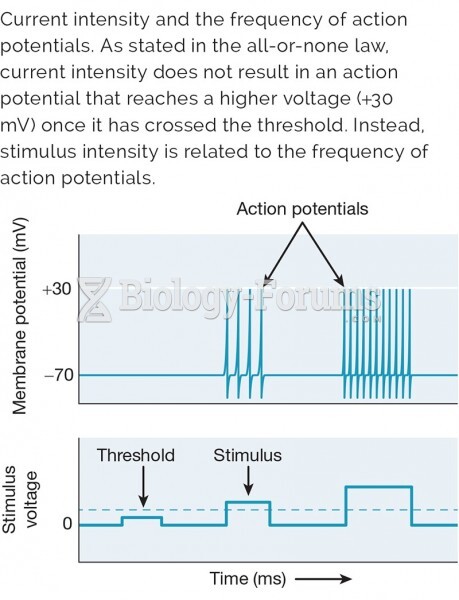|
|
|
In women, pharmacodynamic differences include increased sensitivity to (and increased effectiveness of) beta-blockers, opioids, selective serotonin reuptake inhibitors, and typical antipsychotics.
Aspirin is the most widely used drug in the world. It has even been recognized as such by the Guinness Book of World Records.
The calories found in one piece of cherry cheesecake could light a 60-watt light bulb for 1.5 hours.
In the United States, an estimated 50 million unnecessary antibiotics are prescribed for viral respiratory infections.
Most strokes are caused when blood clots move to a blood vessel in the brain and block blood flow to that area. Thrombolytic therapy can be used to dissolve the clot quickly. If given within 3 hours of the first stroke symptoms, this therapy can help limit stroke damage and disability.







